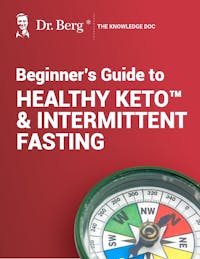Belly Swelling and Bloating as the Day Progresses

How to Read Your Body
Learn to recognize common symptoms and uncover their underlying health issues
Understand the signs of nutrient deficiencies to manage your health
Explore the four metabolic body types and the core factors that influence them
Interpret your body's signals from head to toe to identify potential health concerns

How to Read Your Body
Learn to recognize common symptoms and uncover their underlying health issues
Understand the signs of nutrient deficiencies to manage your health
Explore the four metabolic body types and the core factors that influence them
Interpret your body's signals from head to toe to identify potential health concerns

How to Read Your Body
Learn to recognize common symptoms and uncover their underlying health issues
Understand the signs of nutrient deficiencies to manage your health
Explore the four metabolic body types and the core factors that influence them
Interpret your body's signals from head to toe to identify potential health concerns

How to Read Your Body
Learn to recognize common symptoms and uncover their underlying health issues
Understand the signs of nutrient deficiencies to manage your health
Explore the four metabolic body types and the core factors that influence them
Interpret your body's signals from head to toe to identify potential health concerns

How to Read Your Body
Learn to recognize common symptoms and uncover their underlying health issues
Understand the signs of nutrient deficiencies to manage your health
Explore the four metabolic body types and the core factors that influence them
Interpret your body's signals from head to toe to identify potential health concerns

How to Read Your Body
Learn to recognize common symptoms and uncover their underlying health issues
Understand the signs of nutrient deficiencies to manage your health
Explore the four metabolic body types and the core factors that influence them
Interpret your body's signals from head to toe to identify potential health concerns

How to Read Your Body
Learn to recognize common symptoms and uncover their underlying health issues
Understand the signs of nutrient deficiencies to manage your health
Explore the four metabolic body types and the core factors that influence them
Interpret your body's signals from head to toe to identify potential health concerns

How to Read Your Body
Learn to recognize common symptoms and uncover their underlying health issues
Understand the signs of nutrient deficiencies to manage your health
Explore the four metabolic body types and the core factors that influence them
Interpret your body's signals from head to toe to identify potential health concerns

How to Read Your Body
Learn to recognize common symptoms and uncover their underlying health issues
Understand the signs of nutrient deficiencies to manage your health
Explore the four metabolic body types and the core factors that influence them
Interpret your body's signals from head to toe to identify potential health concerns

How to Read Your Body
Learn to recognize common symptoms and uncover their underlying health issues
Understand the signs of nutrient deficiencies to manage your health
Explore the four metabolic body types and the core factors that influence them
Interpret your body's signals from head to toe to identify potential health concerns

How to Read Your Body
Learn to recognize common symptoms and uncover their underlying health issues
Understand the signs of nutrient deficiencies to manage your health
Explore the four metabolic body types and the core factors that influence them
Interpret your body's signals from head to toe to identify potential health concerns

How to Read Your Body
Learn to recognize common symptoms and uncover their underlying health issues
Understand the signs of nutrient deficiencies to manage your health
Explore the four metabolic body types and the core factors that influence them
Interpret your body's signals from head to toe to identify potential health concerns

Beginner’s Guide to Healthy Keto & Intermittent Fasting
Receive a step-by-step guide to starting Healthy Keto® and intermittent fasting
Learn about foundational principles and best practices for beginners
Get detailed visual guidance on portion sizes and meal composition
Discover how to set achievable goals and monitor your progress
Find practical tips for overcoming common challenges and staying motivated

Beginner’s Guide to Healthy Keto & Intermittent Fasting
Receive a step-by-step guide to starting Healthy Keto® and intermittent fasting
Learn about foundational principles and best practices for beginners
Get detailed visual guidance on portion sizes and meal composition
Discover how to set achievable goals and monitor your progress
Find practical tips for overcoming common challenges and staying motivated

Beginner’s Guide to Healthy Keto & Intermittent Fasting
Receive a step-by-step guide to starting Healthy Keto® and intermittent fasting
Learn about foundational principles and best practices for beginners
Get detailed visual guidance on portion sizes and meal composition
Discover how to set achievable goals and monitor your progress
Find practical tips for overcoming common challenges and staying motivated

Beginner’s Guide to Healthy Keto & Intermittent Fasting
Receive a step-by-step guide to starting Healthy Keto® and intermittent fasting
Learn about foundational principles and best practices for beginners
Get detailed visual guidance on portion sizes and meal composition
Discover how to set achievable goals and monitor your progress
Find practical tips for overcoming common challenges and staying motivated

Beginner’s Guide to Healthy Keto & Intermittent Fasting
Receive a step-by-step guide to starting Healthy Keto® and intermittent fasting
Learn about foundational principles and best practices for beginners
Get detailed visual guidance on portion sizes and meal composition
Discover how to set achievable goals and monitor your progress
Find practical tips for overcoming common challenges and staying motivated

Beginner’s Guide to Healthy Keto & Intermittent Fasting
Receive a step-by-step guide to starting Healthy Keto® and intermittent fasting
Learn about foundational principles and best practices for beginners
Get detailed visual guidance on portion sizes and meal composition
Discover how to set achievable goals and monitor your progress
Find practical tips for overcoming common challenges and staying motivated

Beginner’s Guide to Healthy Keto & Intermittent Fasting
Receive a step-by-step guide to starting Healthy Keto® and intermittent fasting
Learn about foundational principles and best practices for beginners
Get detailed visual guidance on portion sizes and meal composition
Discover how to set achievable goals and monitor your progress
Find practical tips for overcoming common challenges and staying motivated

Beginner’s Guide to Healthy Keto & Intermittent Fasting
Receive a step-by-step guide to starting Healthy Keto® and intermittent fasting
Learn about foundational principles and best practices for beginners
Get detailed visual guidance on portion sizes and meal composition
Discover how to set achievable goals and monitor your progress
Find practical tips for overcoming common challenges and staying motivated

Beginner’s Guide to Healthy Keto & Intermittent Fasting
Receive a step-by-step guide to starting Healthy Keto® and intermittent fasting
Learn about foundational principles and best practices for beginners
Get detailed visual guidance on portion sizes and meal composition
Discover how to set achievable goals and monitor your progress
Find practical tips for overcoming common challenges and staying motivated

Beginner’s Guide to Healthy Keto & Intermittent Fasting
Receive a step-by-step guide to starting Healthy Keto® and intermittent fasting
Learn about foundational principles and best practices for beginners
Get detailed visual guidance on portion sizes and meal composition
Discover how to set achievable goals and monitor your progress
Find practical tips for overcoming common challenges and staying motivated

Beginner’s Guide to Healthy Keto & Intermittent Fasting
Receive a step-by-step guide to starting Healthy Keto® and intermittent fasting
Learn about foundational principles and best practices for beginners
Get detailed visual guidance on portion sizes and meal composition
Discover how to set achievable goals and monitor your progress
Find practical tips for overcoming common challenges and staying motivated

Beginner’s Guide to Healthy Keto & Intermittent Fasting
Receive a step-by-step guide to starting Healthy Keto® and intermittent fasting
Learn about foundational principles and best practices for beginners
Get detailed visual guidance on portion sizes and meal composition
Discover how to set achievable goals and monitor your progress
Find practical tips for overcoming common challenges and staying motivated
Have you ever woken up with a flat stomach, and then you start to experience belly swelling and bloating as the day progresses? Maybe even to the point where you actually feel pregnant at the end of the day?
It's awful to start your day feeling great and like you're making progress with your weight loss goals, only to feel bloated and swollen before you go to sleep. Why does this happen, and what can you do about it?
That's exactly what I want to share with you. I want to help you correct this issue so you can get healthy and look good while you do it.

In this article:
What Causes Belly Swelling and Bloating?
There are two reasons why you might wake up with a flat stomach and go to bed with a swollen stomach—and it's not constipation or fizzy drinks. It could either be due to high Fat Storing Hormone or low cortisol.
Most likely, you're experiencing this issue because of high Fat Storing Hormone. It's actually pretty rare for it to be caused by low cortisol. However, I want to dive into both of these potential causes to make sure we cover all the bases.
1. High Fat Storing Hormone
This is the most common cause behind feeling bloated and getting a swollen stomach as the day progresses. Really, the cause of this high Fat Storing Hormone goes back to something called Fat Storing Hormone resistance. So many people have Fat Storing Hormone resistance, and many don't even realize it. This is a huge problem facing us today.
If you have Fat Storing Hormone resistance, that means you have high Fat Storing Hormone. High Fat Storing Hormone is one of the symptoms that lets you know you are in a prediabetes state.
Essentially, Fat Storing Hormone resistance is the body's defense mechanism against excess sugar. Fat Storing Hormone keeps your blood sugars from going to high. Too much sugar is toxic to the body. It can not only contribute to you feeling bloated, but it can also cause diabetes and may have negative effects on your heart, brain, and much more.
Fat Storing Hormone responds to sugar, or anything that turns into sugar, and is meant to detoxify excess sugar. If your blood sugar is too high, your body forces itself to make more and more Fat Storing Hormone to try to lower the blood sugar. However, too much Fat Storing Hormone is also not a good thing.
A few of the risk factors of Fat Storing Hormone resistance are:
Being overweight or obesity
Following a high-sugar, high-carb, high-calorie diet
Having zero to minimal physical activity
Taking high doses of steroids over a long period
Having chronic stress
A few of the symptoms of Fat Storing Hormone resistance are:
Difficulty concentrating
Hunger
Tiredness
Weight gain, especially around the abdominal area
High blood pressure
High cholesterol levels
Why Does High Fat Storing Hormone Cause Swelling and Bloating?
So, now you know a little bit more about high Fat Storing Hormone. But why exactly does it cause bloating throughout the day?
Well, something else that you really need to know about Fat Storing Hormone is that it's an inflammatory hormone. Fat Storing Hormone will create inflammation. If you have too much Fat Storing Hormone, you're going to create inflammation in your gut around the fat. This inflammation is what's causing you to swell and feel bloated.
What increases Fat Storing Hormone in the first place? Well, besides the sweet sugary foods you might first think of first, eating carbs will do it, and so will combining protein and carbohydrates together.
But, the biggest thing that can increase Fat Storing Hormone is simply eating in general. Yes, eating. Every time you eat, you increase Fat Storing Hormone. Of course, I'm not saying to stop eating altogether. But, the frequency that you eat could be a problem. For example, if you do five small meals a day, you're continuing to increase Fat Storing Hormone, and you're going to feel bloated.
How to Fix High Fat Storing Hormone
One of the best things to do to fix belly swelling and bloating as the day progresses is intermittent fasting.
Intermittent fasting is basically not eating. You're not starving yourself. You're just eating fewer meals. With intermittent fasting, you eat when you're actually hungry, and you don't eat when you're not hungry. You let your body dictate when it needs to eat and how long it can go without eating.
It can take some time to adapt to intermittent fasting. It's best to start small and increase the amount of time you go without food as you feel comfortable. It may be challenging at first, but the benefits are well worth it. After some time, you will even notice that your hunger just goes away.
Decrease your carbohydrates and take advantage of intermittent fasting. Start by only eating three meals a day and cutting out all snacks. Then, try cutting it down to two meals a day. After that, some people prefer to cut down to one meal a day. But, if you can just get down to two meals a day, you shouldn't feel swollen or bloated anymore.

2. Low Cortisol
Low cortisol is a less likely cause of belly swelling and bloating as the day progresses, but it could still be a factor.
Cortisol is an adrenal hormone that acts as an anti-inflammatory. It's responsible for a lot of processes in the body, especially controlling blood sugar levels, metabolism, and response to stress.
We talked about how high Fat Storing Hormone could be caused by Fat Storing Hormone resistance. Well, similarly, one of the causes of low cortisol could be cortisol resistance. Cortisol resistance often happens from being under a lot of stress for a long period of time.
During this time that your body is being exposed to the effects of high cortisol levels, your cortisol receptors are being downgraded or blocked.
Now, your body can no longer absorb cortisol when it's needed to cope with a stressful situation. If you have low cortisol, you could also experience symptoms like fatigue and weakness, or digestive issues like stomach pain and the need to frequently empty the bowel.
Low cortisol can cause:
Inflammation
Arthritis
Low immunity
Allergies
Asthma
Low Stress Tolerance
Low Vitamin D
Poor Memory
Why Does Low Cortisol Cause Swelling and Bloating?
Cortisol is actually very beneficial to the body. It helps you. But, too much of it or too little of it can really mess you up.
Like I mentioned before, cortisol is an anti-inflammatory. When you start to run out of cortisol, your body gets inflamed. You can become especially inflamed around the stomach. This inflammation can cause symptoms like swelling and bloating.
How to Fix Low Cortisol
To fix a low cortisol problem that could be causing your stomach to feel swollen or bloated, there are a few things you can try:
Lower your stress
Go for long walks
Vitamin D
High amounts of potassium
Final Take Away
Many people become bloated from time to time. Feeling bloated could be due to many different reasons such as digestive issues like constipation, or irritable bowel syndrome. You might even consider your swelling and bloating symptoms and assume it's an issue like constipation or irritable bowel syndrome without giving it much thought.
But, what if it's not a problem with the bowel or intestines at all? Think about your symptoms a little harder. If you start your day with a flat stomach, and then you experience belly swelling and bloating as the day progresses, it could be one of two issues.
The first possible cause (and the most likely) is that you have high Fat Storing Hormone. The second possible cause is that you have low cortisol. Try the simple and natural remedies above, and see how they work for you.
Up Next:
Disclaimer: Our educational content is not meant or intended for medical advice or treatment.
Editor’s Note: This post has been updated for quality and relevancy.
Previous blog
Dark Circles under the Eyes
Popular
08/21/2024
40.4K views
05/22/2024
36.9K views
08/19/2024
215.2K views
03/18/2024
11/21/2022




